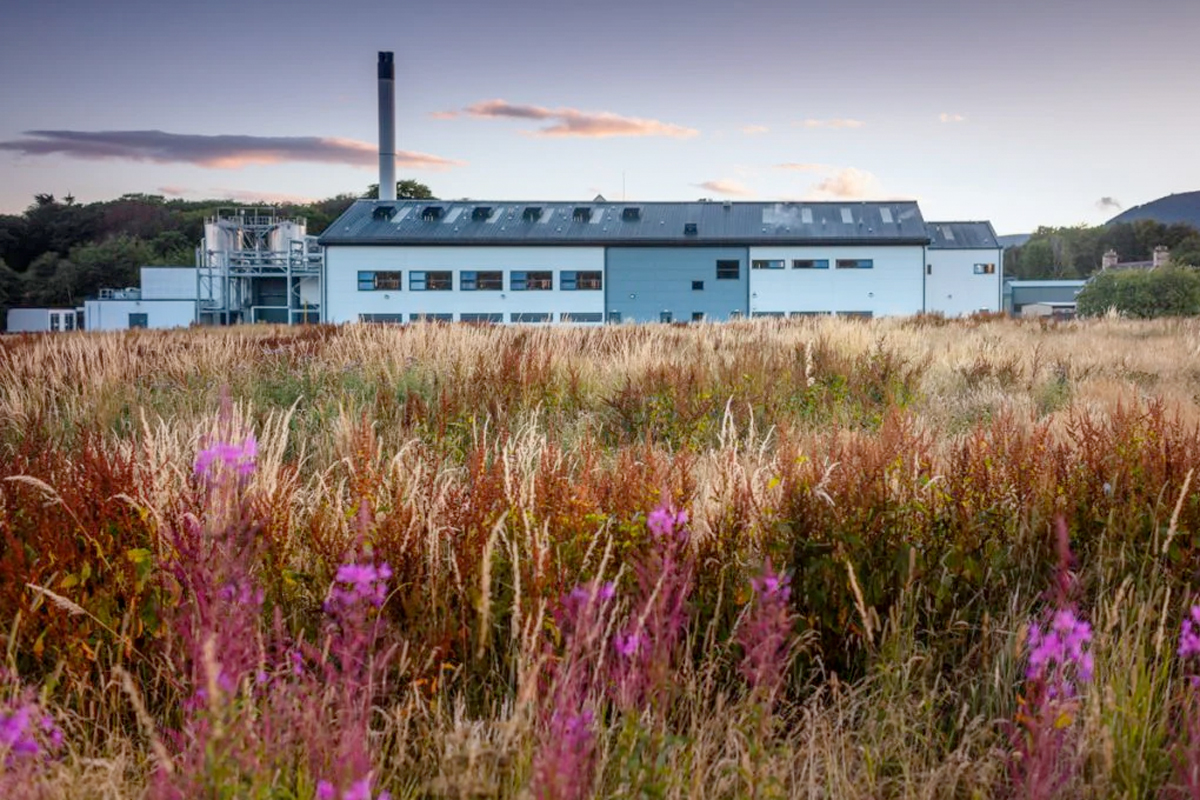Teaninich’s story
The distillery of Teaninich is in the Highlands of Scotland, roughly one hour’s drive north of Inverness. It is a little-known distillery despite being one of the largest in the Scotch whisky industry. The name Teaninich translates from the Gaelic ‘taigh-na-h’inich’ and means ‘house of the monks’ – it is thought that this relates to a long-disappeared local monastery.
Teaninich single malt is highly regarded by whisky blenders and 99% of production at the distillery is allocated for this purpose. The spirit is a key component in Diageo blends such as Johnnie Walker, but it is also used by other companies – for example, Compass Box often use it to give their blends structure and complexity.
As a result, Teaninich single malt bottlings are rare. The only consistently released expression is Teaninich 10 years old. This forms part of Diageo’s Flora & Fauna range – a collection that showcases some of the company’s lesser-known ‘workhorse’ distilleries, while also celebrating some of Scotland’s best wildlife and plants.
A 17-year-old appeared in the Diageo Special Releases in 2017, marking the distillery’s only representation in the esteemed series. Otherwise, you will have to search Teaninich out with the independent bottlers, where it can be found with more regularity.
Teaninich’s history
Teaninich was founded by Captain Hugo Munro in 1817. He was a colourful character, who was blinded by a musket ball during the Napoleanic wars, built the distillery on his family estate. Upon retirement in 1831, Munro sold the estate and distillery to his younger brother Lieutenant-General John Munro. The distillery remained owned or part-owned by the Munro family until 1904 when Robert Innes Cameron became sole owner.
Cameron died in 1932, and a year later the distillery was sold to Distillers Company Limited (DCL). This was a key moment and set Teaninich on the track that we find it today. Over time, DCL evolved to become the modern-day Diageo. Both companies, and those bridging in between, have used Teaninich almost exclusively in several blended Scotch whisky brands including Johnnie Walker.
By the 1970s, Teaninich was one of the largest distilleries in Scotland. A new extension, known as Distillery B, helped to achieve this. The original distillery was renamed as Distillery A. Both were decommissioned and demolished in the late-1990s and replaced by the current massive facility. It is now the third largest within Diageo, Scotland’s largest whisky producer, behind only Glen Ord and Roseisle.
- How to pronounce Teaninich? tee-nin-nick
- Country: Scotland
- Region: Highlands
- Founded: 1817
- Current owners: Diageo
- Production capacity per year: 10.2 million litres
- Mash tun: 2x 7 ton mash filters
- Washbacks: 20 (18 x wooden and 2x stainless steel)
- Stills: 12
- Visitor centre: No
Teaninich Distillery
Riverside Drive
Alness
IV17 0XB
tel – +44(0)1349 885001
www.malts.com
Did you know?
Teaninich is one of only three whisky distilleries in Scotland to use a mash filter, rather than a traditional mash tun. The other two are Inchdairnie and the Glenmorangie Lighthouse. This equipment is more commonly used in the beer industry and squeezes the mash through a series of plates, like squeezing a tea bag, to extract the sugary wort.


